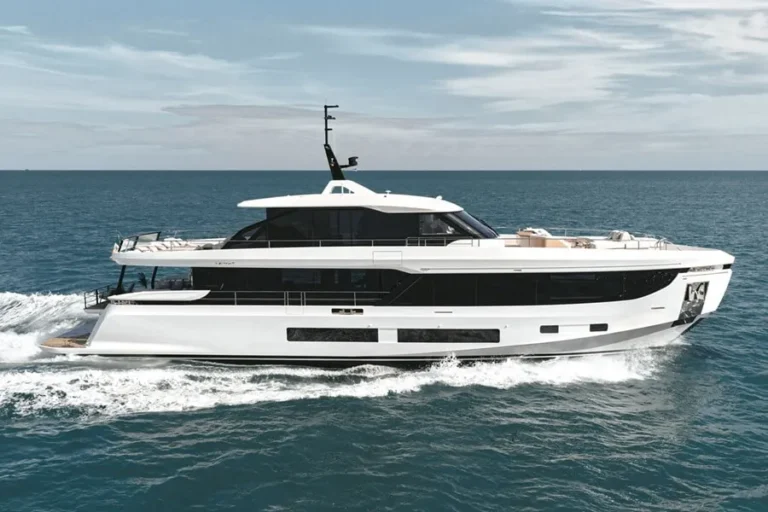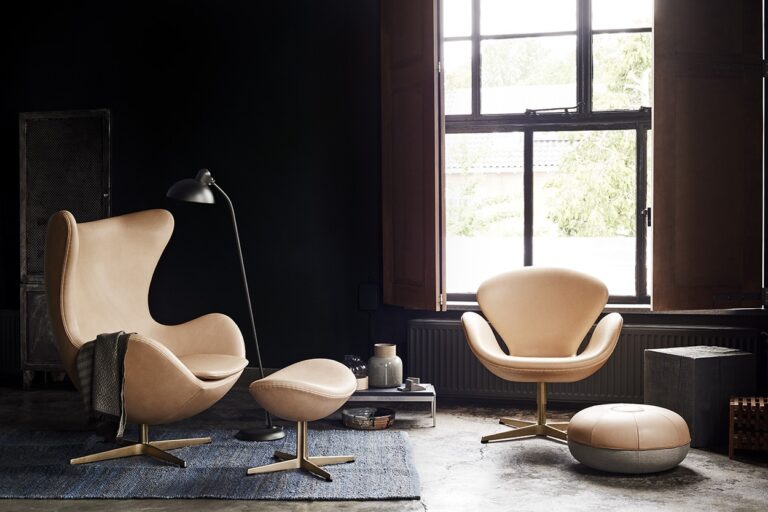8 Designers (and Their Designs) That Endure
Great design has no expiration date. It is a principle proven not by a season’s popularity, but by the passing of generations. It could come in the form of a lamp that still defines a room after fifty years, a chair that remains in production for a century and a building that has become the soul of a city. LUXUO profiles the visionary veterans behind these lasting legacies, exploring the philosophy and force of will required to create for the ages.
Fontana Arte
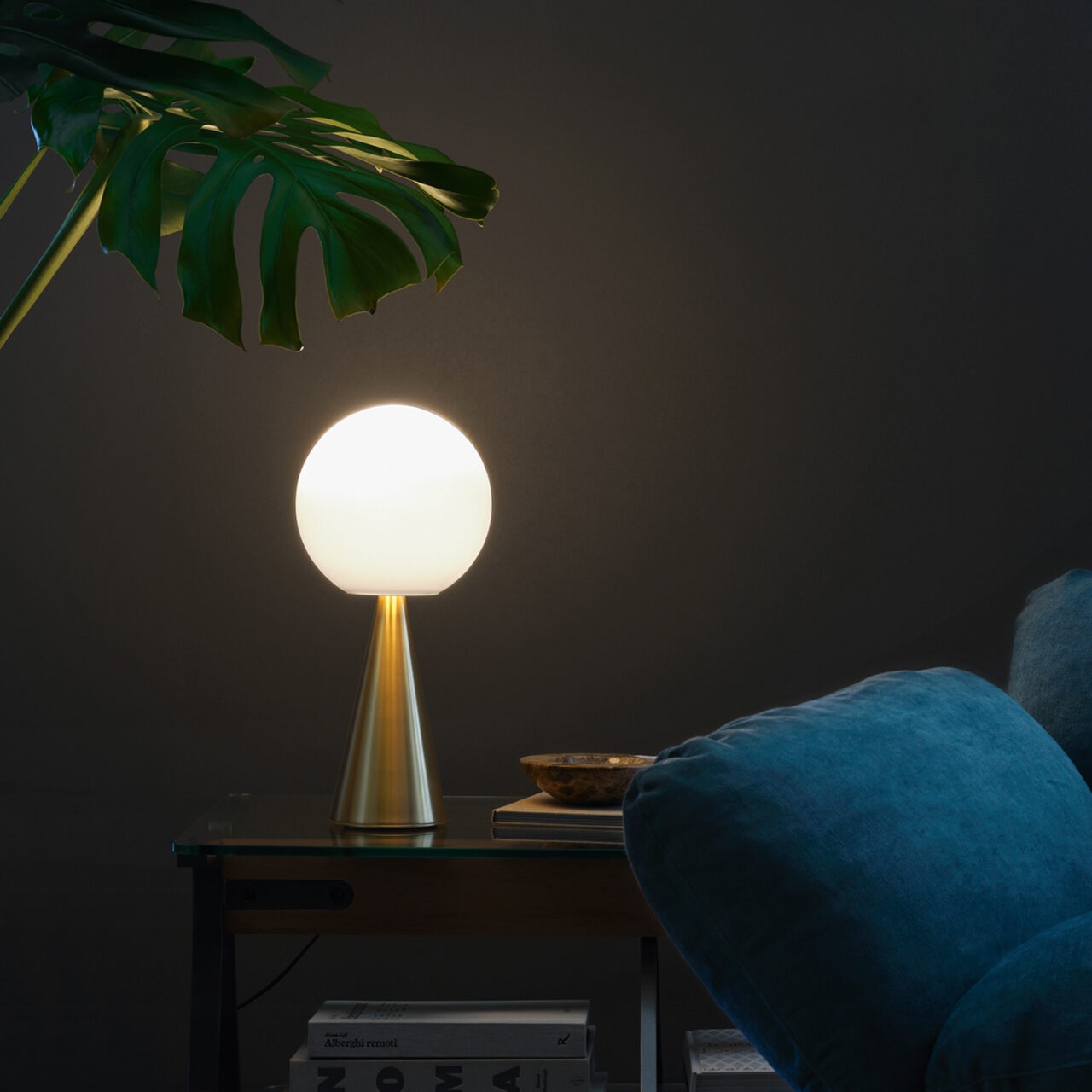
The tale of FontanaArte begins with a door, not a lamp. Gio Ponti — an architect — was commissioned in 1932 to design the main entrance to Milan’s Palazzo dell’Information. He envisioned glass as an artistic medium, not just a functional material. To fulfill this goal, he founded his own workshop, which later evolved into the brand we know today.
This was not a departure from architecture, but rather an expansion of it. Ponti approached objects with the rigour of an architect, viewing light as an essential component of space. The company swiftly transitioned from architectural glazing to producing brilliant furnishings that combined accuracy and poetry.
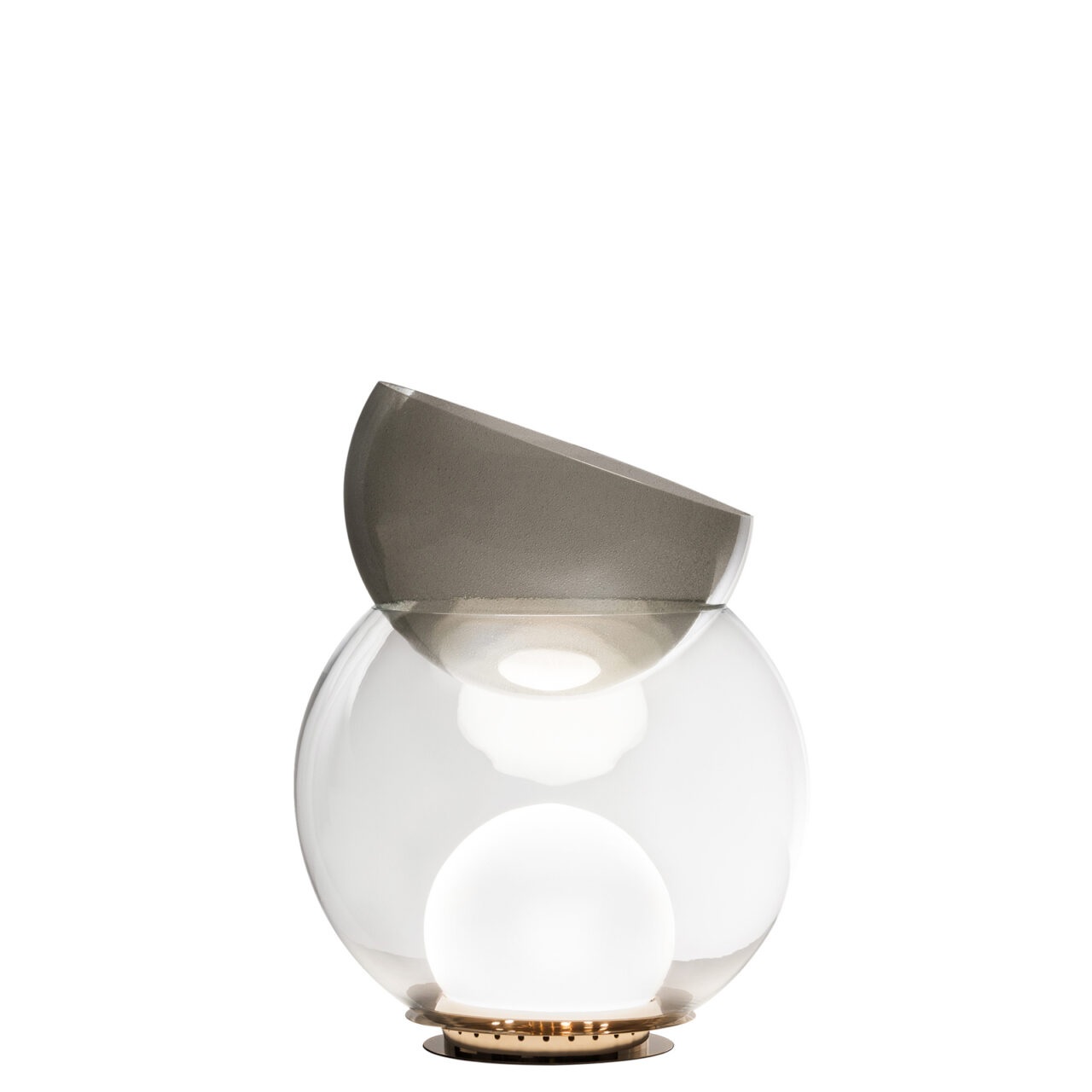
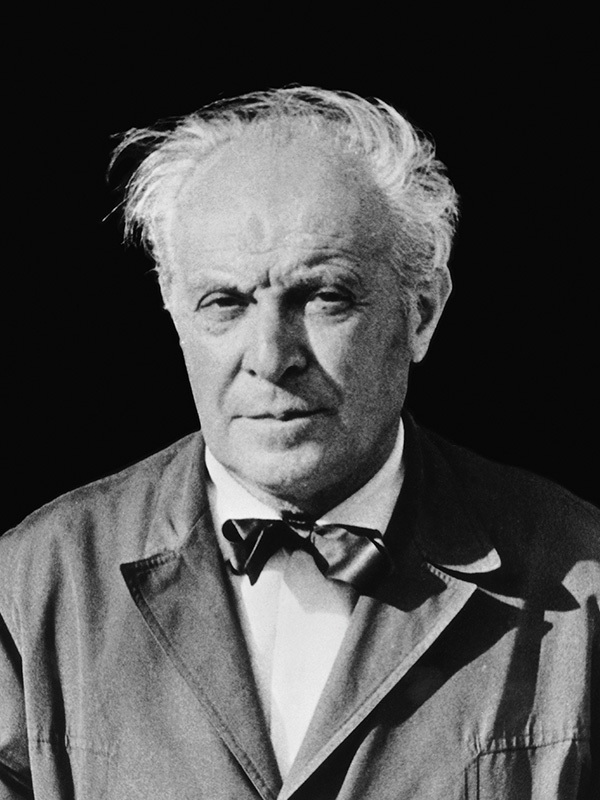
“Giova” lamp designed by Gae Aulenti for Fontana Arte. Image: Fontana Arte. (left)
Gio Ponti. Image: Fontana Arte. (right)
This attitude is brilliantly exemplified by two of its most iconic creations. Gae Aulenti’s “Giova” table lamp — designed in the 1970s — is a perfect example of geometric simplicity. The simple composition of a cylinder, a sphere and a disk feels both timeless and current. Similarly, the “0024” ceiling light — designed by Ponti and Pietro Chiesa — transformed the chandelier. It is a huge, flattened sphere of satin-finished glass that emits diffuse, ambient light that is both lovely and completely useful. These items — distributed by Made & Make — are more than just lights; they are small works of architecture that continue to define rooms with their silent authority.
Oluce’s Light Fixtures
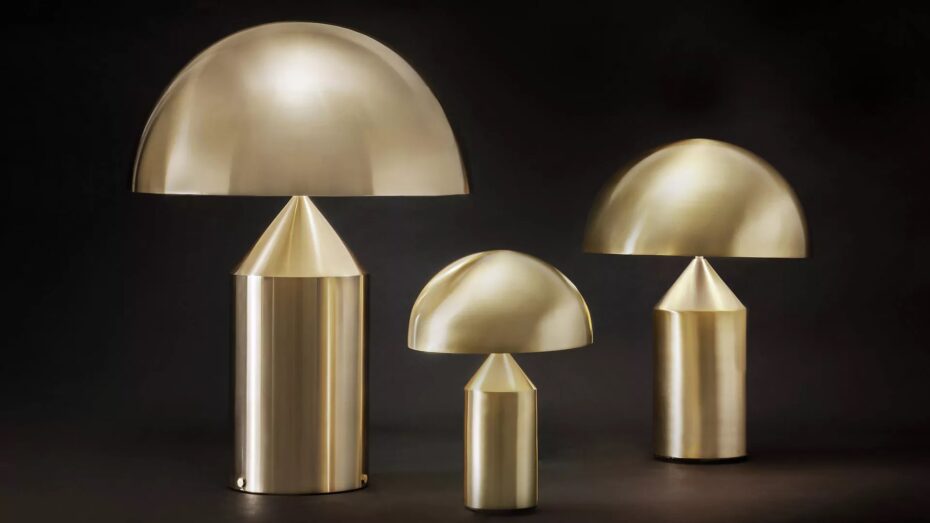
Oluce is Italy’s oldest continuously operating lighting design firm. Founded in 1945, its story is intertwined with the fabric of postwar Italian design, demonstrating a concern for form and intellectual rigour. Collaborations with influential personalities helped to shape the brand’s identity. In the 1950s, architect Bruno Munari established a precedent with his conceptual, almost architectural approach to light. This created a culture in which a lamp was more than just a fixture; it was an item of thoughtful design.
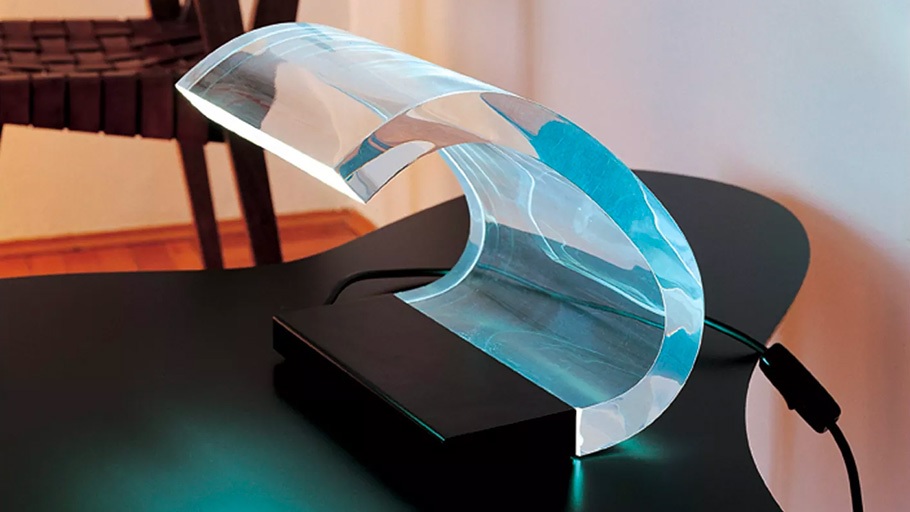
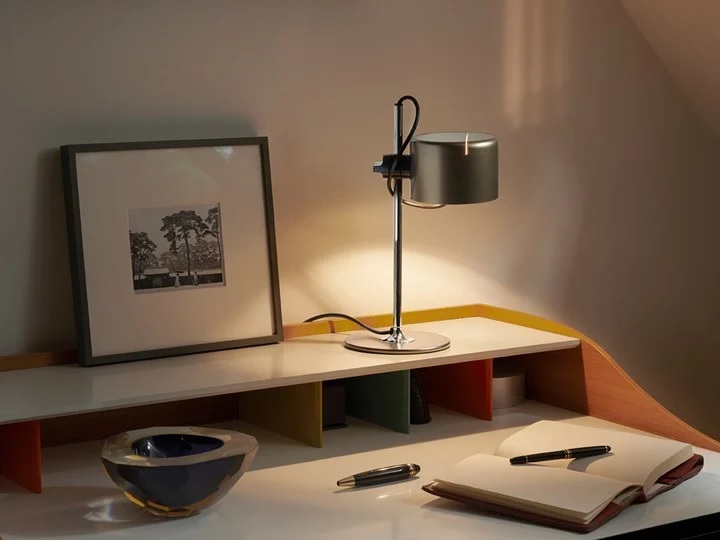
The “Acrilica” lamp designed by Joe Colombo for Oluce. Image: Oluce. (left)
The mini “Coupe” lamp debuted at Milan Design Week 2025. Image: Oluce. (right)
Vico Magistretti’s 1977 design of the “Atollo” lamp exemplified this attitude. Atollo — with its clean, geometric composition of a cylinder, cone and hemisphere — became the template for the abstract table lamp. It is a study of essential forms. Magistretti had already influenced the brand’s direction with designs such as the Sonora, a lamp made of opal glass that cast a mellow, spreading illumination.
Another notable piece is Joe Colombo’s Academy, a dynamic illumination system from 1979. Its precise, technical design demonstrated Oluce’s devotion to innovation and functionality. These pieces are landmarks in the history of lighting design.
British Design Icon Kelly Hoppen

For more than four decades, the name Kelly Hoppen has represented a singular, unshakable vision in interior design. Her career — which began in the 1970s — has matured into a standard for a specific type of disciplined luxury. She is a principle-establishing artist rather than a trend-follower, and her work exemplifies a timeless aesthetic.
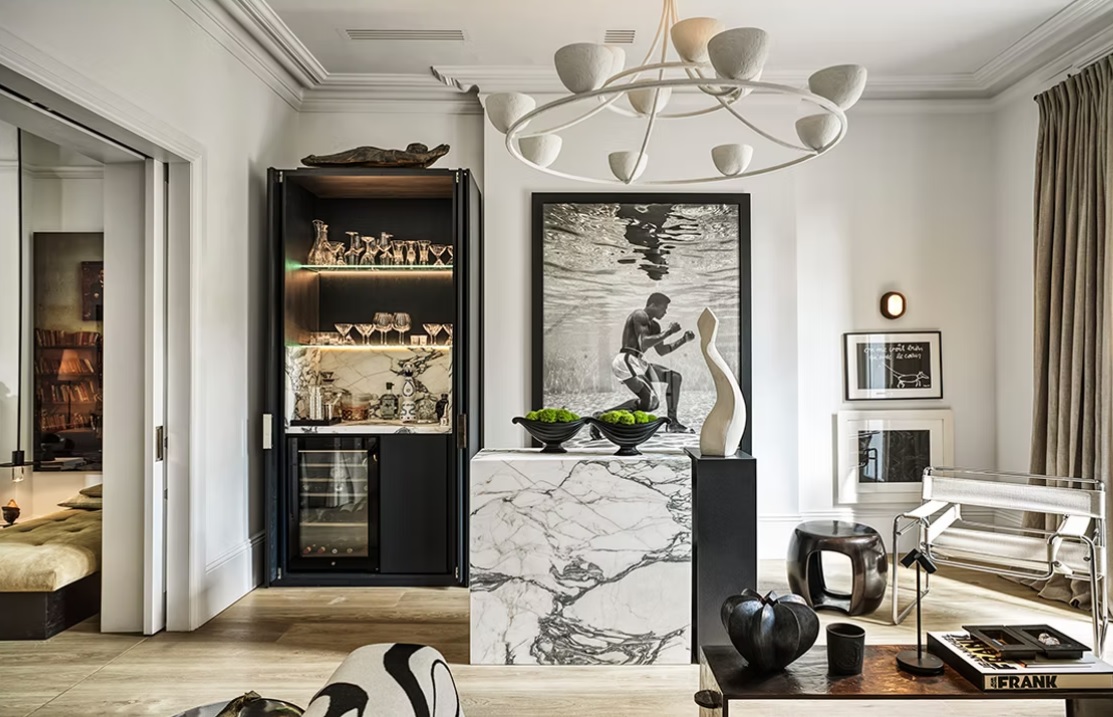
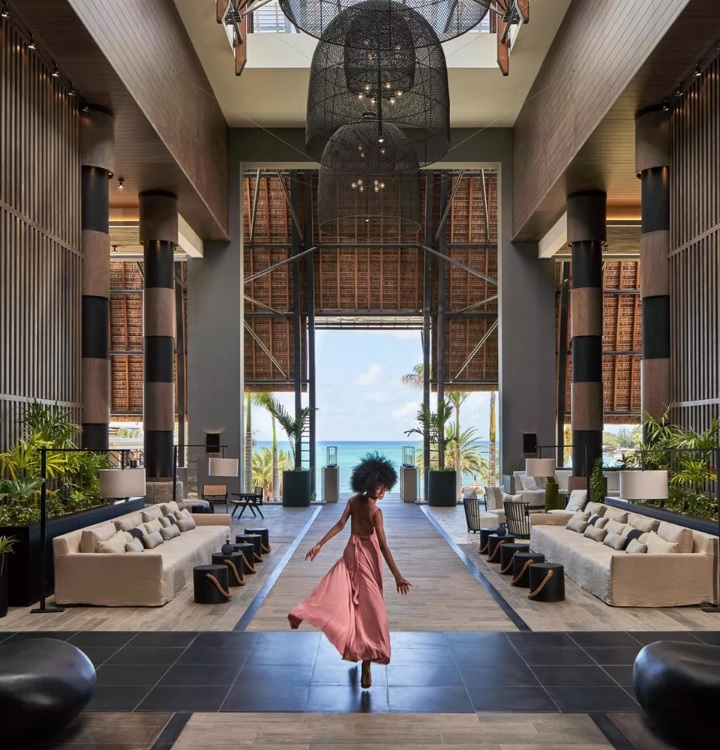
A UK residence designed by Kelly Hoppen. Image: Kelly Hoppen. (left)
Lux Grand Baie hotel in Mauritius designed by Kelly Hoppen. Image: Kelly Hoppen (right)
Her unique style — a subtle blend of Eastern sensitivity and Western modernism — is characterised by neutral tones. This is more than just a fondness for beige and taupe; it is a researched philosophy that values texture, balance and tranquillity. She expertly blends clean lines with rich, tactile materials, resulting in places that are both organised and emotionally relaxing.
This constant, confident approach has won her an unparalleled reputation. From London apartments to global developments, her brand brings the weight of experience and the promise of flawless execution. Hoppen’s brand has been recognised with an MBE and CBE for her accomplishments and it is now part of the design community. She represents a stylistic legacy that endures precisely because it rejects the ephemeral in favour of the fundamental.
American Design Savant Kelly Wearstler

Kelly Wearstler has been a defining figure in American interior design for more than 20 years. Her career began in the 1990s, when she received widespread recognition for her revolutionary work on the Viceroy hotel in Santa Monica. This project laid the groundwork for what would become her distinctive aesthetic — a bold, modern take on elegance.
Her style is known for its bold eclecticism and artistic layering. She expertly blends time periods, combining vintage findings with custom-designed furniture and startling organic accents. Her homes are not minimalist; they are carefully managed experiences with dramatic forms, rich textures and a dynamic use of colour and pattern. This approach extends to her product creations, which include furniture, lighting and decorative pieces that reflect her distinctive perspective.
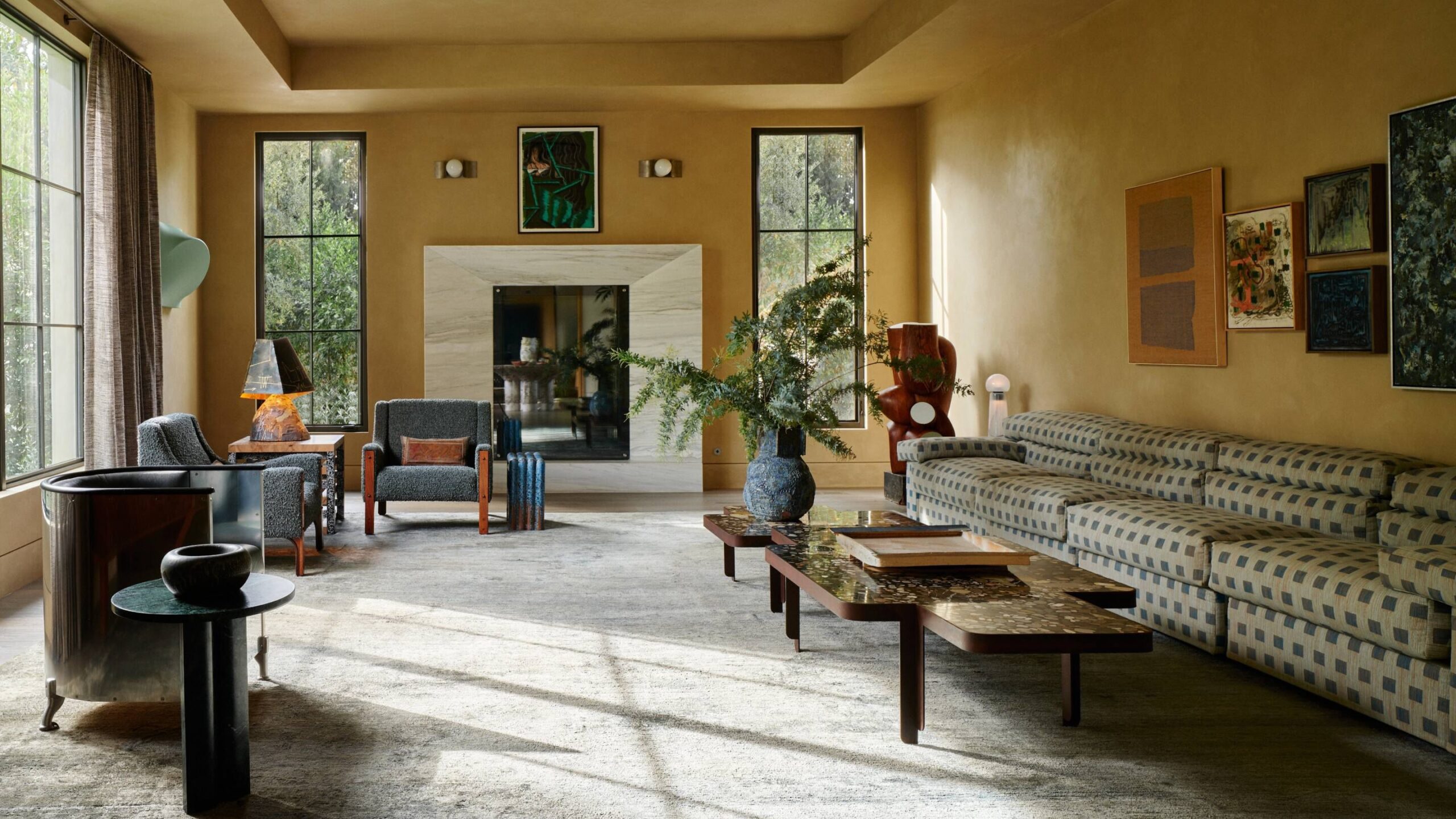
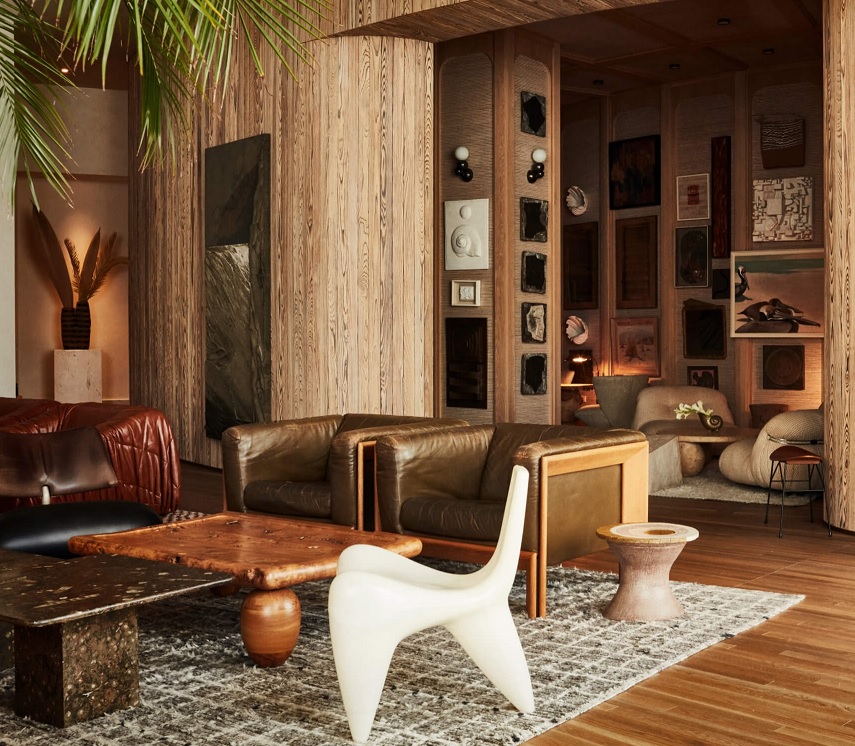
A residence in Lupine, United States, designed by Kelly Wearstler. Image: Kelly Wearstler. (left)
A Santa Monica Proper hotel designed by Kelly Wearstler. Image: Kelly Wearstler. (right)
Wearstler’s reach has expanded beyond private commissions to a global audience. She has established a reputable brand known for intellectual and creative rigour. Her work is routinely included in major international design periodicals, solidifying her reputation as a seasoned professional with a distinct and timeless vision. Her career is constantly evolving, pushing the frontiers of residential and hospitality design.
Swan & McLaren Are Proudly Singaporean
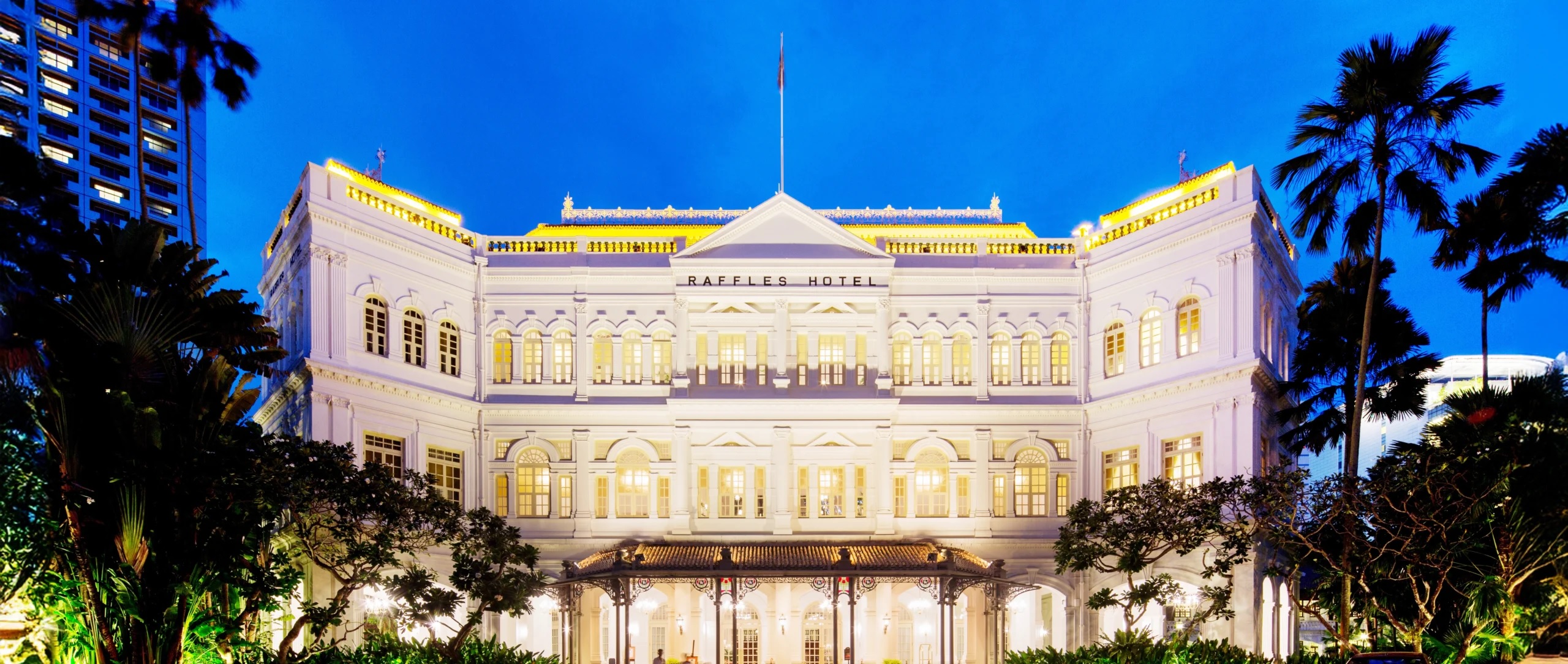
Swan & McLaren architects have been changing Singapore’s built environment since 1892. Its founding predates the nation’s current skyline and its history is inextricably linked to the city’s transformation from a colonial outpost to a worldwide metropolis. The firm’s longevity demonstrates its ability to adapt while preserving a basic architectural discipline.
Its early work features notable colonial-era landmarks. The firm designed the Istana — Singapore’s president’s official residence — as well as the previous Supreme Court building, both of which have left lasting civic legacies. These constructions demonstrated a mastery of the dominant Neoclassical and Palladian styles, executed with formal precision.

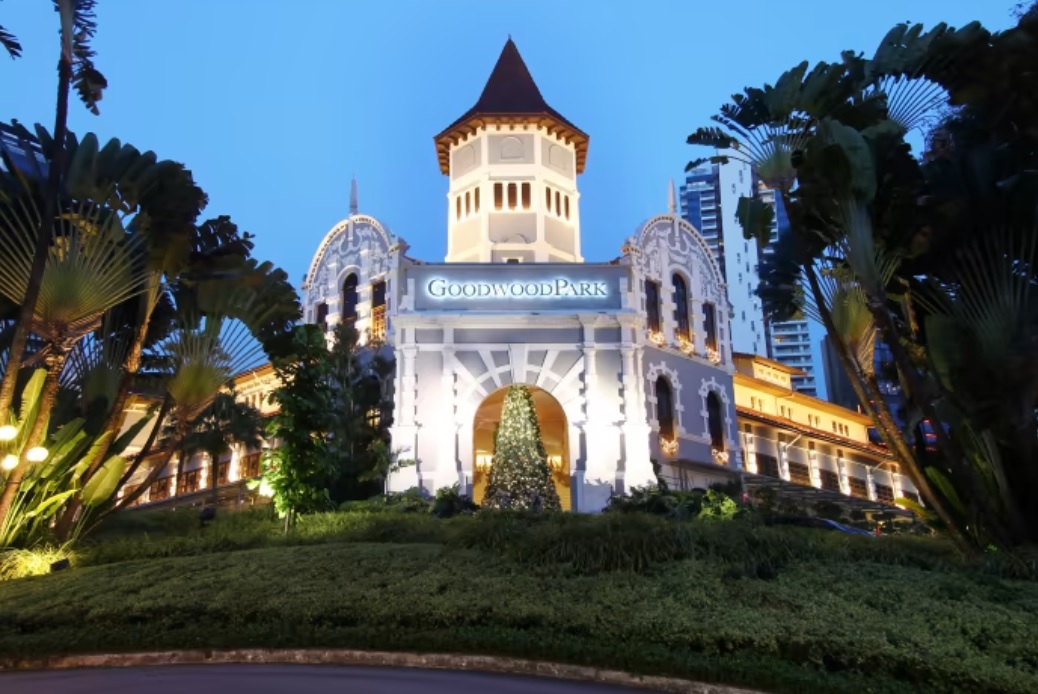
Eugene Wong, Matthew Hon and Lim Chai Boon, group directors of Swan & Maclaren.
Image: Kelvin Chia. (left)
Goodwood Park Hotel was also designed by Swan & McLaren. Image: Swan & McLaren. (right)
As Singapore progressed, the firm’s portfolio expanded to include commercial, residential and institutional projects. This progression demonstrates adaptation to evolving urban requirements while maintaining the fundamental principles of size, context and material integrity. The practice’s ongoing operation for more than a century — despite massive stylistic and technological shifts — qualifies it as an industry veteran. Its portfolio of work serves as a physical record of the country’s architectural past, ensuring its reputation as a recognised and enduring institution. Today, its legacy is more than just a historical record; its buildings continue to serve and define the community.
A Time-Honoured Architecture Firm

Skidmore, Owings and Merrill (SOM) — founded in 1936 — laid the groundwork for today’s architectural and engineering firms. Its integrated approach — which brought together architects, engineers and technological specialists under one roof — established a new model for completing large-scale, complex projects. This collaborative methodology has guided its practice for nearly nine decades.
SOM is best known for pioneering the International Style and the modern skyscraper. Its early postwar projects — such as the Lever House in New York — revolutionised the corporate tower with a sleek glass and steel curtain wall. This was followed by the Inland Steel Building, an innovative structure featuring service cores that are separated to create column-free office levels. The Sears Tower in Chicago — the firm’s most renowned achievement of the era — stood as the world’s tallest skyscraper for 25 years.

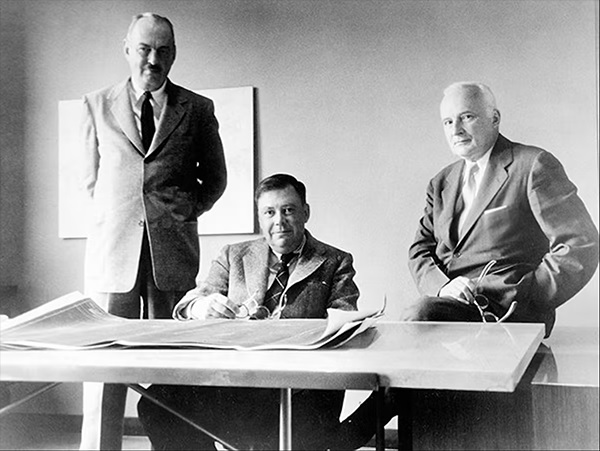
The upcoming Aman Singapore will be housed in the city’s tallest skyscraper. Image: Skidmore, Owings, and Merrill. (left)
Louis Skidmore (1897), Nathaniel A. Owings (1896), and John O. Merrill (1896). Image: Skidmore, Owings, and Merrill (right)
The practice’s tradition of technical innovation continued with buildings such as the John Hancock Centre, which pioneered the bundled tube structural system. In the twenty-first century, SOM has continued to change skylines with structures that answer contemporary concerns about sustainability and workplace design. One World Trade Centre exemplifies this ongoing commitment, symbolising resilience while incorporating cutting-edge environmental and safety features.
SOM has continuously operated on a grand scale, with a portfolio that includes airports, academic buildings and master plans. Its ongoing effect is based on a continuous, rigorous approach to problem resolution rather than a single characteristic style. The firm’s work reveals a profound understanding of structure, materiality and urban context, solidifying its position as a cornerstone of world architecture.
The Italian Design Legacy of Cassina
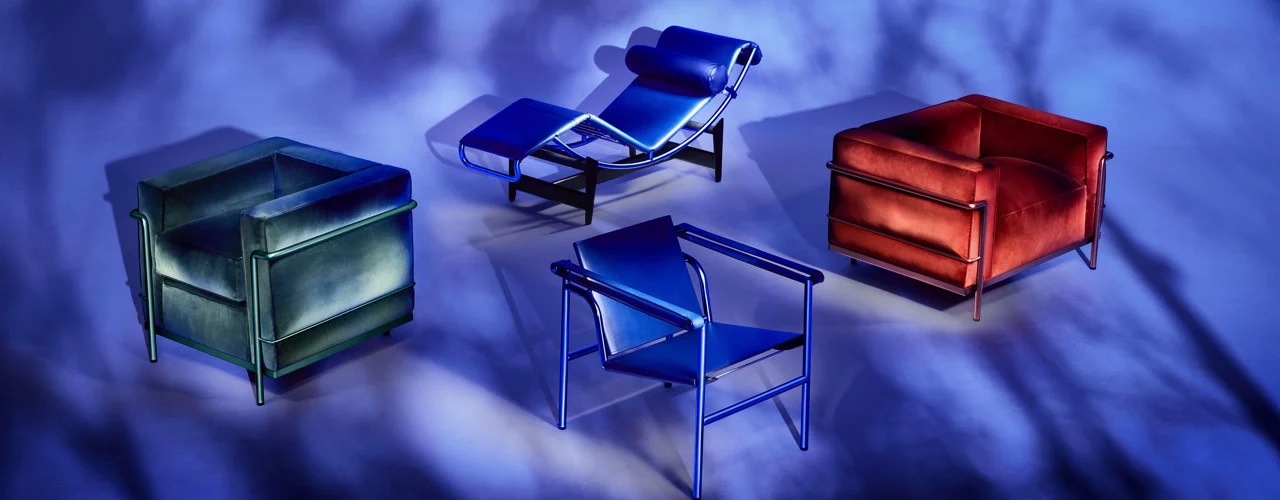
Cassina — founded in 1927 in Meda — has become a cornerstone of modern furniture design. The company’s identity is founded on two pillars — a strong appreciation for artisanal craftsmanship in carpentry and a forward-thinking commitment to industrial innovation. This equilibrium has guided its approach for nearly a century.
The unveiling of the Cassina I Maestri collection in 1964 was a watershed moment in the company’s history. This enormous effort saw the business reissue works by 20th-century architectural luminaries, including Le Corbusier, Pierre Jeanneret and Charlotte Perriand. Cassina positioned itself not only as a maker but also as a keeper of design history by faithfully reviving old ideas for production.
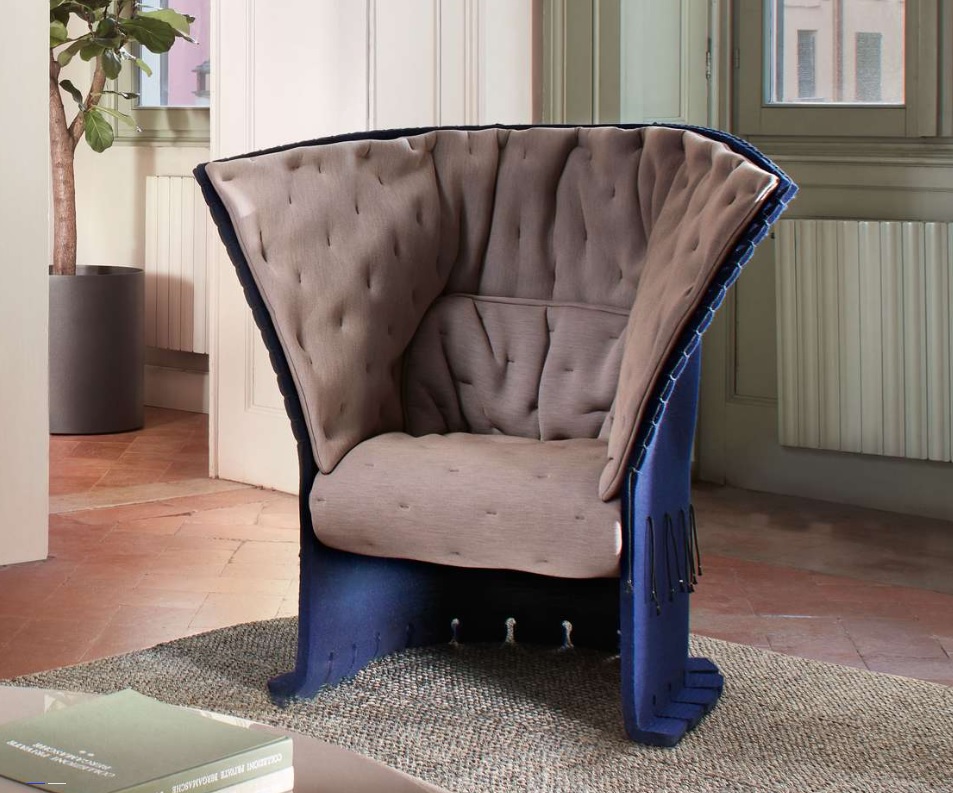
This curatorial mentality extends to current collaborations. To maintain its position at the forefront of the industry, the brand has constantly commissioned top designers, exploring their distinct voices. For decades, creative director Piero Lissoni has influenced the brand’s aesthetic orientation. At the same time, high-profile collaborations with individuals such as Philippe Starck have produced modern icons like the bold and sculptural LC outdoor sofas.
These collaborations are based on Cassina’s superior production capabilities and painstaking attention to materiality. Distributed by W. Atelier, the brand’s reputation is built on its ability to transform a designer’s concept into a flawlessly executed object. Cassina has maintained its position as a renowned and authoritative voice in the global design landscape by combining the legacy of the past with the originality of the present.
Philippe Starck, The Raving Genius
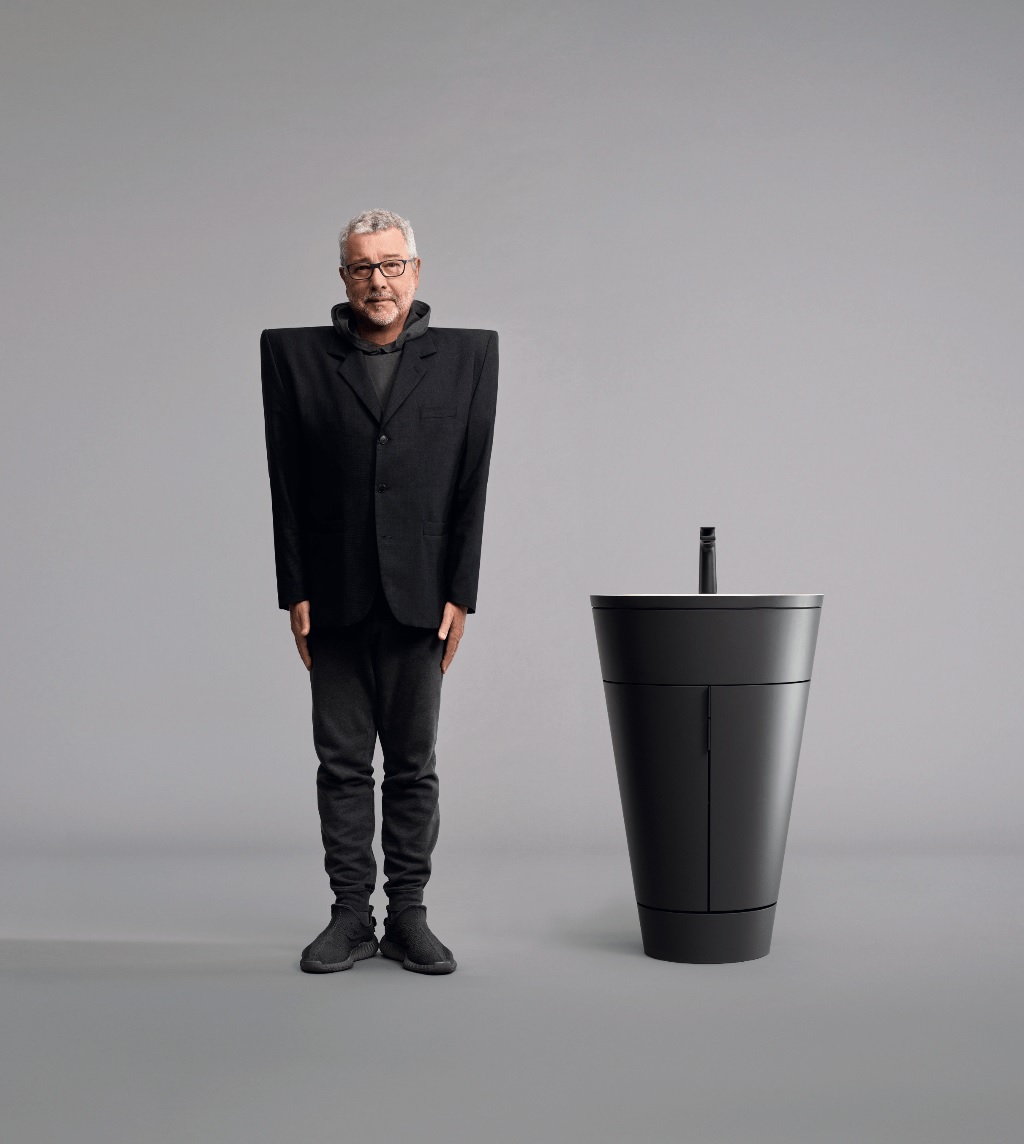
He wanders through the place not as a guest, but as a surgeon inspecting an operating theatre. This is Philippe Starck. For almost four decades, his name has been a quiet constant in the design language, a veteran whose work in furniture, lighting and interiors has influenced how we live.
His career is based on a notion of “democratic design,” rather than trends. He once questioned why a decent chair should be a luxury, which led to iconic, mass-produced items that made intelligent design accessible to the masses, rather than the elite. His work includes a collection of modern classics, such as the Louis Ghost chair, a transparent reinterpretation of baroque extravagance; the Juicy Salif lemon squeezer for Alessi, which is both a sculptural conversation piece and a functional kitchen appliance; and the Gun light, a stark, confrontational statement.

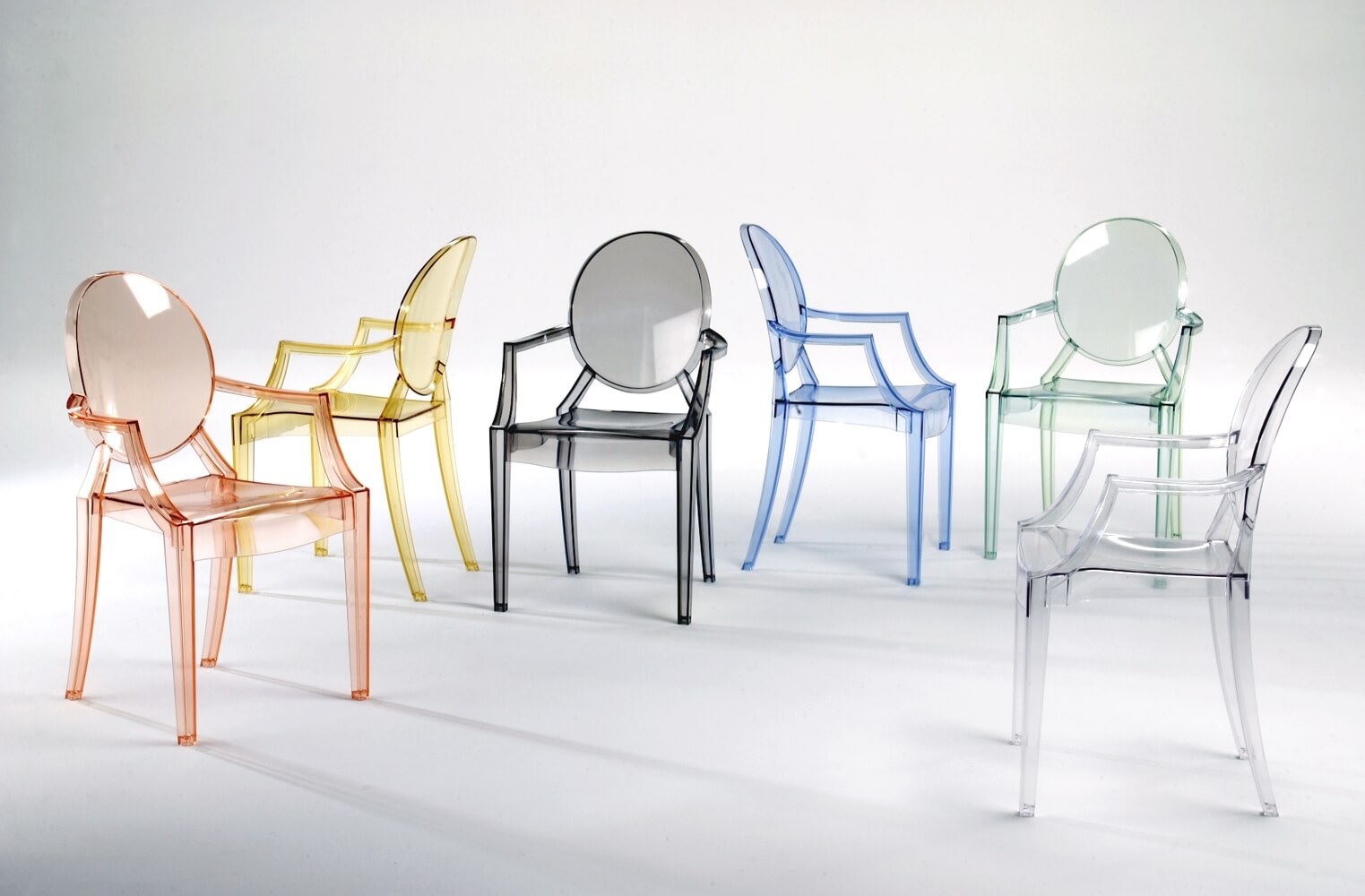
The “juicy Salif” lemon press designed by Philippe Starck for Alessi. Image: Alessi. (left)
Ghost chairs designed by Philippe Starck. Image: Kartell. (right)
Starck’s approach is very human-centred. He reduces items to their fundamental truth, their “reason to be.” The outcome is a corpus of work that feels both predictable and unexpected. He creates hotels that resemble living organisms, residences that serve as sanctuaries and commonplace objects with a serene intelligence. There is no gloss, just function turned beautiful. His career has been dedicated to arguing that good design is a moral necessity — a duty to improve the daily lives of people, rather than an aesthetic luxury. He is an environmental author, not a stylist.
For more design reads, click here.
The post 8 Designers (and Their Designs) That Endure appeared first on LUXUO.

